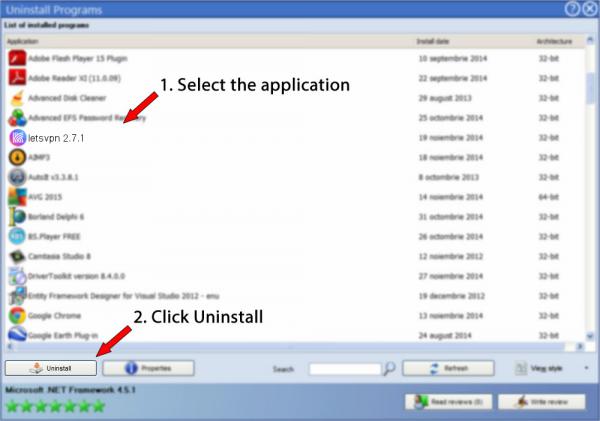Pnputil.exe /d oemNUMBER.inf; Finally use. Tapinstall install OemVista.inf TAP0901 to install your driver Important:: If you do not see the Big Scary Unsigned Driver Warning - Windows will use the old (not new) driver. Build for HLK tests. A test-signed version of tap-windows6 driver should be used for the HLK tests. Updating drivers for tap0901 from C:Program FilesTAP-WindowsdriverOemVista.inf. Tapinstall.exe failed. Original Poster 1 point 1 year ago.
- Oemvista.inf Tap0901 Tapinstall.exe Failed
- Oemvista Inf Tap0901 Tap Install Exe Failed Version
- Oemvista Inf Tap0901 Tap Install Exe Failed Bypass
This is an NDIS 6 implementation of the TAP-Windows driver, used by OpenVPN and other apps. NDIS 6 drivers can run on Windows Vista or higher.
Build
Dvi: Enumerating INFs from path list 'C: WINDOWS INF' inf: Searched 1 potential matches in published INF directory dvi: Selected driver installs from section tap0901.ndi in 'c: windows system32 driverstore filerepository oemvista.infamd64a572b7f20c402d28 oemvista.inf'. Dvi: Class GUID of device changed to: 4d36e972-e325-11ce-bfc1. This one may not be an issue for you, but perhaps you've seen an answer. The TAP installer fails, so not much sense in proceeding.C:UsersAdministratoraiccutap-driver-3264 (1)tap-driver-326464-bitrem Add a new TAP-Win64 virtual ethernet adapterC:UsersAdministratoraiccutap-driver-3264 (1)tap-driver-326464-bittapinstall.exe install OemWin2k.inf tap0901tapinstall.exe failed.C.
To build, the following prerequisites are required:
- Python 2.7
- Microsoft Windows 7 WDK (Windows Driver Kit)
- Windows code signing certificate
- Git (not strictly required, but useful for running commands using bundled bash shell)
- MakeNSIS (optional)
- Patched source code directory of devcon sample from WDK (optional)
- Prebuilt tapinstall.exe binaries (optional)
Make sure you add Python's install directory (usually c:python27) to the PATH environment variable.

These instructions have been tested on Windows 7 using Git Bash, as well as on Windows 2012 Server using Git Bash and Windows Powershell.
View build script options::
$ python buildtap.py Usage: buildtap.py [options]
Options: -h, --help show this help message and exit -s SRC, --src=SRC TAP-Windows top-level directory, default=

Edit version.m4 and paths.py as necessary then build::
$ python buildtap.py -b
On successful completion, all build products will be placed in the dist
directory as well as tap6.tar.gz. The NSIS installer package will be placed tothe build root directory.
Note that due to the strict driver signing requirements in Windows 10 you needan EV certificate to sign the driver files. These EV certificates may bestored inside a hardware device, which makes fully automated signing processdifficult, dangerous or impossible. Eventually the signing process will becomeeven more involved, with drivers having to be submitted to the WindowsHardware Developer Center Dashboard portal. Therefore, by default, thisbuildsystem no longer signs any files. You can revert to the old behaviorby using the --sign parameter.
Building tapinstall (optional)
The build system supports building tapinstall.exe (a.k.a. devcon.exe). Howeverthe devcon source code in WinDDK does not build without modifications whichcannot be made public due to licensing restrictions. For these reasons thedefault behavior is to reuse pre-built executables. To make sure the buildsystemfinds the executables create the following directory structure undertap-windows6 directory::: tapinstall 7600 objfre_wlh_amd64 amd64 tapinstall.exe objfre_wlh_x86 i386 tapinstall.exe
This structure is equal to what building tapinstall would create. Replace 7600with the major number of your WinDDK version. Finally call buildtap.py with--ti=tapinstall
.

Please note that the NSIS packaging (-p) step will fail if you don't havetapinstall.exe available. Also don't use the -c
flag or the above directorieswill get wiped before MakeNSIS is able to find them.
Install/Update/Remove
The driver can be installed using a command-line tool, tapinstall.exe, which isbundled with OpenVPN and tap-windows installers. Note that in some versions ofOpenVPN tapinstall.exe is called devcon.exe. To install, update or remove thetap-windows NDIS 6 driver follow these steps:
- place tapinstall.exe/devcon.exe to your PATH
- open an Administrator shell
- cd to dist
- cd to amd64 or i386 depending on your system's processor architecture.
Install::
$ tapinstall install OemVista.inf TAP0901
Update::
$ tapinstall update OemVista.inf TAP0901
Oemvista.inf Tap0901 Tapinstall.exe Failed
Remove::
$ tapinstall remove TAP0901

Notes on proxies
It is possible to build tap-windows6 without connectivity to the Internet but any attempt to timestamp the driver will fail. For this reason configure your outbound proxy server before starting the build. Note that the command prompt also needs to be restarted to make use of new proxy settings.
Oemvista Inf Tap0901 Tap Install Exe Failed Version
Notes on Authenticode signatures
Recent Windows versions such as Windows 10 are fairly picky about theAuthenticode signatures of kernel-mode drivers. In addition making older Windowsversions such as Vista play along with signatures that Windows 10 accepts can berather challenging. A good starting point on this topic is thebuilding tap-windows6 <https://community.openvpn.net/openvpn/wiki/BuildingTapWindows6>_page on the OpenVPN community wiki. As that page points out, having twocompletely separate Authenticode signatures may be the only reasonable option.Fortunately there is a tool, Sign-Tap6 <https://github.com/mattock/sign-tap6/>_,which can be used to append secondary signatures to the tap-windows6 driver orto handle the entire signing process if necessary.
License
Oemvista Inf Tap0901 Tap Install Exe Failed Bypass
See the file COPYING <COPYING>_.
